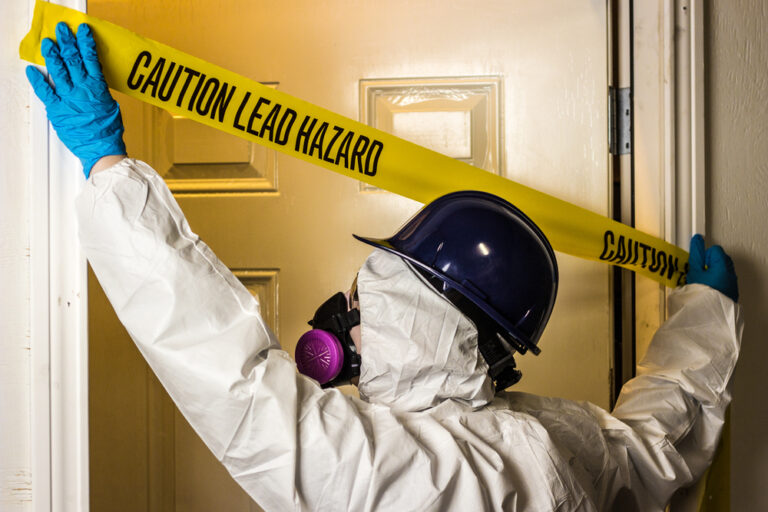In July 2023, the EPA proposed stronger requirements for the removal of lead-based paint (LBP) hazards in pre-1978 buildings and childcare facilities.

Although LBP was banned for residential use by the federal government in 1978, it’s estimated that more than 31 million pre-1978 houses still contain LBP and more than 3 million of them have one or more children under the age of 6 living there, creating health and developmental risks for children.
“Lead-contaminated dust is one of the most common causes of elevated blood lead levels in children,” an Agency news release says. “Lead dust commonly occurs when lead-based paint deteriorates or is disturbed. Due to normal behaviors such as crawling and hand-to-mouth activities, young children are particularly at risk of higher exposure to ingesting lead-containing dust. Lead exposure can pose a significant health and safety threat to children and can cause irreversible and life-long health effects, including behavioral problems, lower IQ, slowed growth and more.”
The removal of LBP hazards is known as abatement.
The proposed changes are substantial and include:
- An expansion of the categories of regulated properties,
- Changes to the thresholds for determining when lead abatement is required, and
- New requirements for required lead disclosures in sale and lease contracts.
If finalized, the proposed rule would strengthen the EPA’s regulations under Section 402 of the Toxic Substances Control Act (TSCA) by revising the dust-lead hazard standards (DLHSs), which identify hazardous lead in dust on floors and windowsills, and the dust-lead clearance levels (DLCLs), the amount of lead that can remain in dust on floors, windowsills, and window troughs after lead-removal activities.
The Agency seeks to reduce the DLHS from 10 micrograms per square foot (µg/ft2) for floors and 100 µg/ft2 for windowsills to any reportable level greater than zero in recognition of the fact that there is no level of lead in dust that has been found to be safe for children.
It also proposes to:
- Lower the DLCL from 10 µg/ft2 to 3 µg/ft2 for floors.
- Lower the DLCL from 100 µg/ft2 to 20 µg/ft2 for windowsills.
- Lower the DLCL from 400 µg/ft2 to 25 µg/ft2 for window troughs.
The EPA believes these are the lowest post-abatement dust-lead levels that can be reliably and effectively achieved.
“Under the proposed rule, recommendations for action would apply when lead dust is at or above the DLCL,” says a Vorys Sater Seymour and Pease LLP article in Lexology. “The proposed DLHS would also require any regulated entity to disclose any reportable level of lead. The disclosure duty would apply even after a property had completed lead abatement in compliance with the DLCL.”
Potential impacted entities include:
- Building construction (North American Industry Classification System (NAICS) code 236): single-family housing construction, multifamily housing construction, and residential remodelers;
- Specialty trade contractors (NAICS code 238): plumbing, heating, and air-conditioning contractors; painting and wall-covering contractors; electrical contractors; finish carpentry contractors; drywall and insulation contractors; siding contractors; tile and terrazzo contractors; and glass and glazing contractors;
- Real estate (NAICS code 531): lessors of residential buildings and dwellings, residential property managers, and property owners, as well as those property owners who receive assistance through federal housing programs;
- Child daycare services (NAICS code 624410);
- Elementary and secondary schools (NAICS code 611110): elementary schools with kindergarten classrooms;
- Other technical and trade schools (NAICS code 611519): training providers;
- Engineering services (NAICS code 541330) and building inspection services (NAICS code 541350): dust-sampling technicians;
- Lead abatement professionals (NAICS code 562910): firms and supervisors engaged in LBP activities;
- Testing laboratories (NAICS code 541380) that analyze dust wipe samples for lead; and
- Federal agencies that own residential property (NAICS code 92511, 92811).
Comments will be accepted on the proposed rule until October 2, 2023, on the Federal eRulemaking platform under Docket#: EPA-HQ-OPPT-2023-0231.